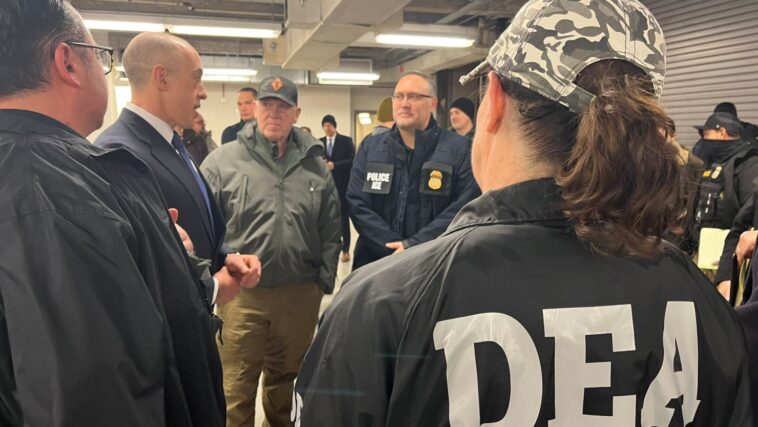The head of state is taking steps to highlight municipalities that lack cooperation with federal immigration laws, signaling a new phase in his administration’s efforts to curb illegal immigration. These areas, often referred to as “sanctuary cities,” have been known to limit their cooperation with federal authorities in enforcing immigration regulations. However, President Trump is introducing two new executive orders to bolster immigration law and enhance compliance nationwide. For both citizens and immigrants alike, this signifies an era of stronger adherence to law and order.
The upcoming directives from the president, scheduled to be officially announced on Monday, represent a more assertive approach against sanctuary cities. These jurisdictions have so far avoided complete compliance with aggressive policies directed at curbing irregular immigration. The new action from Trump’s side shows a strategic move intended to foster unity among local, state, and federal approaches to immigration law.
Conflicting views on handling undocumented immigrants exist, with some areas adopting policies that restrict or refuse cooperation with federal immigration agencies. Such regions have been the subject of scrutiny from administration authorities as they seek to increase the rate of deportations across the country.
The White House’s frustration with jurisdictions refusing to cooperate fully with immigration enforcement is palpable. The administration’s aim is to foster an environment conducive to executing federal decrees, especially those pertinent to immigration enforcement. One of the forthcoming executive orders addresses this issue head-on, attempting to bridge the differences in policy towards undocumented immigrants.
This order will instruct Attorney General Pam Bondi and Homeland Security Secretary Kristi Noem to curate a publicly available list. This comprehensive list will outline the state and local jurisdictions deemed as ‘sanctuary cities’ by the Trump Administration. This step further underscores the administration’s intent to enforce immigration laws uniformly across the country while enhancing public awareness of these jurisdictions.
The release of this comprehensive list also aims to put some pressure on the non-complying jurisdictions. The Trump administration is exploring legal tactics against officials who are identified as barriers to the execution of established immigration law. This bold stance only echoes the wider sentiment in the administration of prioritizing law enforcement.
In tandem with the first, a second executive order from President Trump aims to embolden America’s law enforcement agencies. This directive is designed to encourage them to pursue those who break the law with renewed vigor, adhering to the philosophy that no one is above the law.
Indeed, the intensity of the administration’s efforts is already visible. One example includes legal action against the city of Rochester, New York. The Trump administration brought forth a lawsuit against this municipality, arguing that Rochester was unlawfully obstructing immigration law enforcement.
The Justice Department, in its endeavor to uphold legal integrity, has initiated prosecution against certain officials allegedly obstructing immigration law enforcement. This includes a judge in Milwaukee, underneath charges of hindrance to immigration agents.

